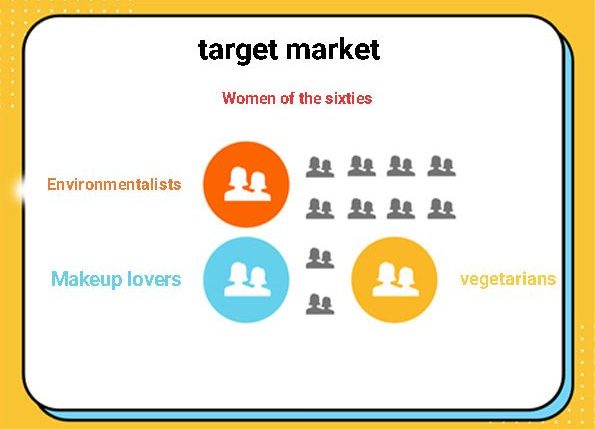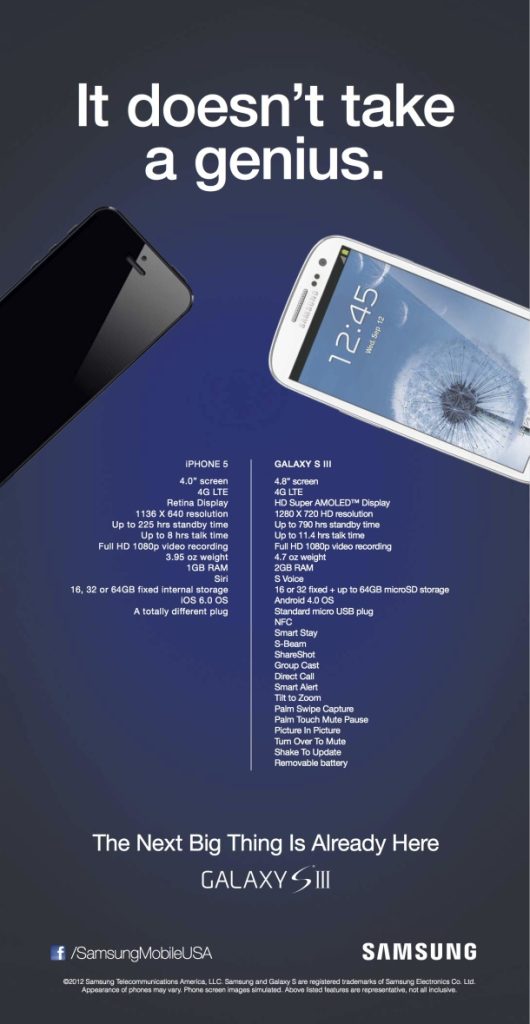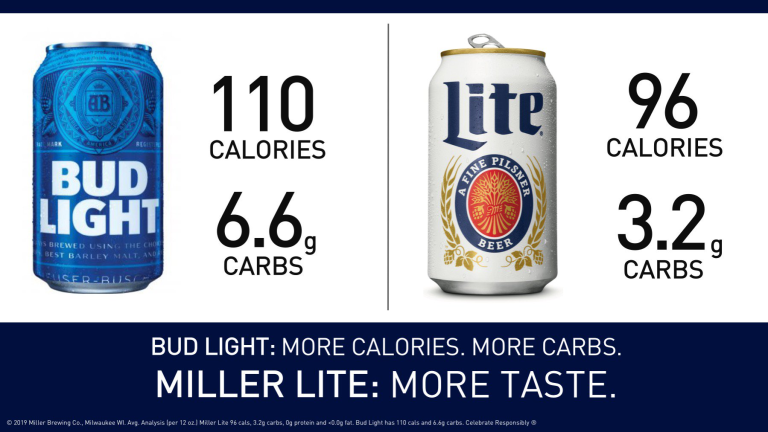In the days when Apple fans were eagerly waiting for the unveiling of iPhone 5 after a year, a strange thing happened.
iPhone 5 was able to take the smartphone sales record; But its unveiling led to more Galaxy S3 sales!
What happened was under Samsung’s advertising strategy
With the right strategy, Samsung was able to gain a share of the market that was dominated by its competitor.
But what is the meaning of advertising strategy and how can you win the battlefield like Samsung? This is what we want to talk about in detail in this article.
So if advertising campaigns haven’t done you any good so far or you are going to start advertising and you don’t know how and where, stay with us until the end of this article.
What is meant by advertising strategy?
Advertising strategy is thousands of miles away from the hornless giant you have created in your mind!
Maybe the appearance of the word “strategy” is misleading and seems a bit complicated and even scary; But there is a simple meaning behind this word.
Politicians define strategy in this way:
Using facilities to plan in order to reach a specific goal
Military commanders also look at it from the point of view of managing the operations and movement of the enemy in war.
We marketers don’t have a different definition for it either! Jack Welch (one of the former managers of General Electric) says:
Strategy means we make clear and precise decisions about how to compete with others.With these prerequisites, what is the advertising strategy? In the simplest language:
It is a specific plan and plan for advertising, how to communicate with the target audience and persuade them to buy the product.
In other words, it is a comprehensive plan for each and every task and decision you have to make in advertising; From research and understanding the market and target audience to the implementation and measurement of advertising results.
A good strategy should answer all these questions:
- Why do you want to advertise?
- Who do you want to advertise to?
- how do you do it
- What do you expect from the result of the advertisement?
- When do you achieve success and what is your measure for it?
The reason for many ineffective advertisements and business failures is the same unplanned advertisements (read bulk advertisements) and not having the right strategy.
Let’s see the difference between not having and having more in the next section.
Why is it important to have an advertising strategy?
Advertising without a strategy is like a novice swimmer diving into the middle of the ocean; You will definitely drown!
Whatever you want to do, it is better to do a little planning in front of you.
For example, even for the money in your pocket, you draw thousands of plans and plan when, where and exactly how much to spend. other than that?
Having a detailed plan for targeted advertising (increasing brand awareness, increasing sales, increasing traffic, etc.) and determines the path to achieve it, shows the way and the wrong way and puts you a few kilometers ahead of your competitors.
For example, if Samsung were to give up and without planning to face the newly introduced iPhone 5, it would definitely lose to Apple; But they did something with the “It Doesn’t Take a Genius” campaign to make it seem like Apple released the iPhone 5 to keep up with Samsung!
Even the name of the campaign was smartly chosen: you don’t need to be a genius to see that it doesn’t work!
On the other hand, with a strategy, you have better monitoring and management of campaign execution and advertising budgeting, and you can earn more profit by reducing costs.
The judgment is with you! Is it better when you don’t know for whom, how, when and at what cost to advertise, or when you already know the little things you need to do and have enough information about the target market and audience?
Well, now we know what an advertising strategy is and why it is important. In order not to be an idle scholar, in the next section, we will learn how to design a basic advertising strategy together.
Developing an effective advertising strategy in 8 steps
Get your pen and paper ready as we are going to tell you all the steps from start to finish. If you take it step by step with us, you will eventually formulate a calculated strategy. Are yo ready?
Let’s start with the first step, on which, ironically, the fate of everything depends:
1. Determining the target market and target audience
We should start formulating the advertising strategy by knowing and identifying the target market.
If you look at the matter logically, your product or brand cannot be useful for all people in a wide market; Because the needs and interests of customers are different.
Therefore, for advertising, you should divide this big market into several segments and focus on the same segment that both your product is useful for them and it is more profitable for you.
The target market (the same small segment) is a set of people with common values, characteristics and interests that your product and service will benefit them and bring you the most profit and income.
For example, someone who wants to sell sports equipment, his target market is probably athletes, or the target market of gold sellers is women.
There are many ways to identify the target market, which we have already discussed in the article “What is the target market?” (+ ways to identify the target market)” We talked about them in detail and we suggest you definitely take a look at it.
Just know that you need marketing research and data collection tools to segment your market and identify your target market.
The design of questionnaires, interviews, data from analytical tools such as Google Analytics and more specialized tools such as galvanometer will come in handy at this stage.
A galvanometer is a mechanical tool that helps you measure the intensity of people’s feelings when faced with an advertisement.
After completing the research and identifying the target market, draw the persona of the target audience.

For example, the target market of goldsmiths is women; But the target audience of their women’s day campaign is women’s parents or their spouses.
In that story of the battle between iPhone and Samsung, Samsung tried to target the young segment of the market, for whom both the quality brand is important and the features and usability of the product.
2. Research and gathering information about the market
In the second step, you have to get from competitor knowledge to self-knowledge!
That is, to check the status and position of your business in the market, you must first know your competitors and observe them and their activities like a professional detective.
Start your research by checking the following:
- Are competitors’ ads mostly online or offline?
- How are their landing pages?
- What is the customer’s reaction to their ads?
- What are the gaps and gaps in the target market and competitors?
After this, you should get information about the competitors’ pricing strategy and see what kind of strategy your target market is hungry for; Value-based pricing, competitive, economic or…?
The purpose of the analyzes at this stage is to highlight your unique features and value proposition.
In simpler words, at this stage you have to find your difference and distinction from the competition and establish your position in the mind of the audience by promoting the same for the target market.
For example, Tesla’s place in all of our minds is mixed with “initiative and innovation”.
📌 Now tell me what do you remember when you hear the name hinet?
Samsung knew full well that Apple had built its position on “a great phone for the best experience.” He questioned the same issue by comparing the various and more features of the Galaxy S3 in order to gain a larger share of the market by pointing out Apple’s weaknesses.
3. Determining advertising goals
Without a goal, your advertising strategy is a piece of cake!
So far, you know your competitors and market conditions, as well as your target audience.
Now it’s time to ask yourself:
- What do you want from advertising? (Increase sales? Customer retention? Increase site traffic or brand awareness?)
- How long will it take to reach your goal?
- How can you achieve this?
The answer to these questions determines the purpose of the advertisement.
Please don’t stray too far from reality and answer these questions with all the resources you have!
A good goal is realistic, measurable, time-bound and specific; For example, the following goals have all the characteristics of a smart and accurate goal:
✔️ I want to increase the sale of leather bags by 20% from the first of February to the first of April, with Hinet product retargeting ads.
✔️ Attracting 4,000 leads through advertising “Marketing Terms eBook” on popular sites in one month.
Determining advertising channels and time!4.
Advertising channels in advertising strategy
Every word has a place and a time for every advertisement!
In the fourth step, you should clarify the task of the channels and the time of publication of advertisements. This depends on both your budget and your target audience.
For example, if your target audience is middle-aged and retired people and you don’t have a problem with the budget, advertising channels such as television and environmental and print advertising are a good choice; But if you are dealing mostly with young people, online channels are a better choice.
Or, for example, if you have a restaurant, the best time to advertise is around lunch and dinner. If you own a hotel or tourist accommodation, summer holidays, Eid and weekends are the best time to advertise.
Be very careful in choosing the time and place of the ad; Because advertising at the right time and channel has a great impact on increasing the rate of return on investment.
5. Specifying indicators for measurement and analysis
Did you define your channels and goals from advertising?
Now you have to determine a series of indicators and criteria to measure and monitor their performance. The factors that you choose in this step will give you a better view of the degree of fulfillment of the advertising goal.
For example, if your goal is to attract leads and you use video in your ads, the number of leads alone does not indicate the success of your campaign.
Factors such as number of impressions, number of views, click rate, interaction rate, sharing rate, etc., play a role in evaluating the success of campaigns and advertising channels.
3. Content production
In the sixth paragraph of the strategy, you should decide on the production of advertising content.
At this stage, we must specify the type of content (text content, video, photo, motion graphics), the resources needed to produce it, and everything that is involved in the process of producing advertising content.
The decisions you make at this stage will depend on the dimensions of your ads (level and number of campaigns) and your goals.
For example, maybe you need a graphic designer, video editor or a well-equipped studio to prepare your advertising content. Maybe you can handle it yourself or you may have to outsource the project to a zero-to-one hundred advertising agency.
7. Advertising budgeting
So far, we have almost defined the technical details of advertising strategy design, and now it’s time to do the math!
Advertising budget includes 0 to 100 expenses that you spend on advertising; From market research to implementation and evaluation of results.
Allocation of budget in the advertising strategy should be such that neither the skewer burns nor the kebab!
That is, don’t spend so little that you don’t achieve any of your goals, don’t spend excessively so that you don’t get any profit.
There are different ways to budget for advertising. For example, maybe a business sets aside a percentage of its annual sales for advertising, or another spends money on advertising based on tasks, goals and promotional activities.
We suggest that the discussion of budget allocation is hot, read the practical article “The best advertising budgeting methods in 2022” and choose your preferred method.
If at this stage you realize that you cannot afford the advertising costs, you have two options:
Revise advertising goals and channels and adjust the budget based on new goals;
Before setting the goals (third step), determine the advertising budget and make the rest of the decisions based on it.8. Implementation and measurement
We finally reached the last house!
Your advertising strategy is raw until it is implemented, and no one can guarantee its success 100%.
You should run your ad campaigns according to the schedule you set and check the results at regular intervals to see where you are doing and whether everything is going according to plan or not.
Don’t worry if you measure the results based on the metrics you defined in the strategy while running the ads and you’re stuck somewhere!
Review your strategy again and fix its flaws; For example, if the click-through rate was low, your ad content might not be persuasive enough.
Spend some patience and choose the best one by trying and testing different contents and measuring the results.
This is also from the eight-point design of advertising strategy!
If you have any questions about any of the steps, ask us right here. If not, let’s go to the next section and see some of the most common types of strategies together
Types of advertising strategies
Advertising strategies are not one or two; There are different types of them depending on the goals you have in mind, and here we examine 5 of the most commonly used ones.
1. Comparative
The mechanism of comparative strategy is clear from its name; The strategy is based on the comparison of two brands, products or services.
By comparing a brand with its competitor, this strategy distinguishes and reinforces its features and advantages and highlights the values of one of them.
Let’s go back to the story of Samsung and Apple! Samsung used this strategy to defeat its competitor and gain market share. In their ads, they very clearly compared the features of Galaxy S3 and iPhone 5.
They went ahead in such a way that Apple buyers were seen as old people who have no interest in modern technology. This strategy started by printing the following advertisement in newspapers. As you can see, they put a list of their distinctive features next to the features of the iPhone 5. (Click on the image to see the ad in a larger size)
It’s good to know that Samsung still hasn’t given up on Apple and follows the same strategy to deal with its competitor.

⚠️ Note: Be cautious in using this strategy and be very careful when comparing yourself with your competitors and citing your claims so that you don’t face legal problems!
Play with the emotions of the audience!
Another type of advertising strategy is an emotional strategy in which you touch the emotions of the audience (such as sadness, happiness, anger, fear, etc.) and by provoking them, you encourage the customer to take the desired action.
Experience has proven that emotional advertising, because it leads to an emotional reaction, can influence the customer’s behavior and purchase decisions much more easily than logical methods.
For example, if in the promotion of a charity foundation, they tell you that children in a certain area have no shelter and you can help them financially and use the image of the same children in their content (or show the area with a video), you will react to their call without turning back. you give
3. informative
Contrary to the emotional strategy, in this strategy there is reason and logic in between!
In this strategy, we try to make the target audience know the brand and find out what value it creates for them. Instead of relying on emotions and feelings, we convince him with logical reasons; That is, we show how useful our features and benefits are for him.
The purpose of informative advertising is to convince our audience by seeing the facts and statistics that the product is going to make his life better. As a result, it will make him trust us and we will earn good credit.
For example, after Bud light accused its competitor, Miller Light, that their drink was harmful to people, it made people see that their drink was less harmful by presenting real statistics.

Let us illustrate the difference with an emotional and persuasive strategy with an example. To advertise the toothpaste, they probably manipulate the fragrance; An enjoyable experience that targets the audience’s feelings.
Now, if the same toothpaste relies on the results of tests and research to show that it is really effective in oral and dental health, it has gone to the awareness strategy.
For example, a business may not only present its new service with statistics and figures to show what demands the service meets, but also maneuver about service updates and improvements.
4. pull
If you have made a name for yourself and your brand has a good reputation and position in the market, the pull advertising strategy is the best option for you.
In this strategy, rather than seeking to increase brand awareness and attract new customers, you encourage existing customers to buy by drawing them towards the brand.
Like when Coca-Cola asks its customers to take selfies with soda cans and publish them on their social pages.
The main focus and goal of pull strategy is building and maintaining the brand identity in the mind of the customer and driving people towards it.
So if your goal with advertising is to build long-term and sustainable relationships with loyal customers, the pull strategy will get you there.
5. Push
At the opposite point of pull, there is a push strategy, which is more suitable for start-up businesses.
In this strategy, the main goal is to increase awareness about the features and quality of a specific product and service among the target audience (potential customers) in order to create a good position in the market and for the sales product.
You can implement the push strategy in both traditional advertising channels (such as television and print ads) and digital (such as Internet ads).
Usually, if you combine this strategy with content marketing and pricing strategies (for example, offering a lower price when a new product is introduced), it will quickly establish your position as an expert brand in your field.
We now not only know what advertising strategy is, but we also learned how to write a good strategy and got acquainted with its types. You are probably looking for a model to get ideas and a fire to design creative strategies! It is true?
So don’t miss the fascinating part at the end 🙂
6. examples of big business advertising strategies
In this section, we will review some examples of successful advertising strategies of the most famous Iranian and foreign brands so that you can use their experience in designing your strategy:
1. Coca-Cola, the combination of all channels
If you ask us, we’ll say that Coca-Cola is not known for its formula. It’s Coca-Cola’s creative strategies and memorable ads that have made its name famous for over a century!
The first and most important advertising strategy of Coca is the aggressive strategy and simultaneous advertising in different channels such as TV, influencers, social media and even the city walls.

In fact, Coca-Cola does not choose a single line to reach its target audience, but goes to the audience in different ways and with all its might.
This strategy also goes back to their choice in the level of target market coverage, who have put the full coverage of the target market and not a few sectors on the agenda.
Apart from this, Coca-Cola ads always evoke a sense of nostalgia for the audience and run successful campaigns by engaging their emotions and recalling the happy memories customers have made with the brand.
2. Spotify, ultimate personalization
Spotify is a well-known music and podcast streaming platform in the whole world, which was launched in 2008 and was able to eliminate its competitors very soon.
What was the reason?
One of the most important reasons and sparks of Spotify’s growth is their advertising strategy.
The key to Spotify’s successful advertising campaigns is personalization and more precise targeting of users using advertising and data-driven techniques.
For example, in recent years, Spotify Wrapped has helped them cover social media for a few weeks each year.

In this campaign, Spotify prepares a collection based on the data of the last year of each user, which songs he listened to the most, how many hours of music and podcasts he listened to, which genre he played the most and…
This personalized strategy has gone so far that this year they added another cool feature: personality type.
This personality type is different from what we know and is determined by the songs and podcasts we’ve listened to over the past year.
Without a strategy, you lose!
Let us tell you bluntly: without a proper advertising strategy, you will not reach your goal!
Advertising without a specific plan is like walking on a razor’s edge; At any moment, you may blow all your capital in the way of advertising, which has no profit and will bring you a total loss.
In this article, we told you what the advertising strategy is and how you can make an excellent and profitable program for advertising by presenting various solutions, samples and examples.
From here on, it’s your turn to roll up your sleeves and take the first step to formulate a strategy.
You can also count on hinet’s help. If you have any questions about advertising strategy design, ask us under this post so that we can answer them as soon as possible.
We hope this article was useful for you. Feel free to send it to someone you know needs it 🙂

